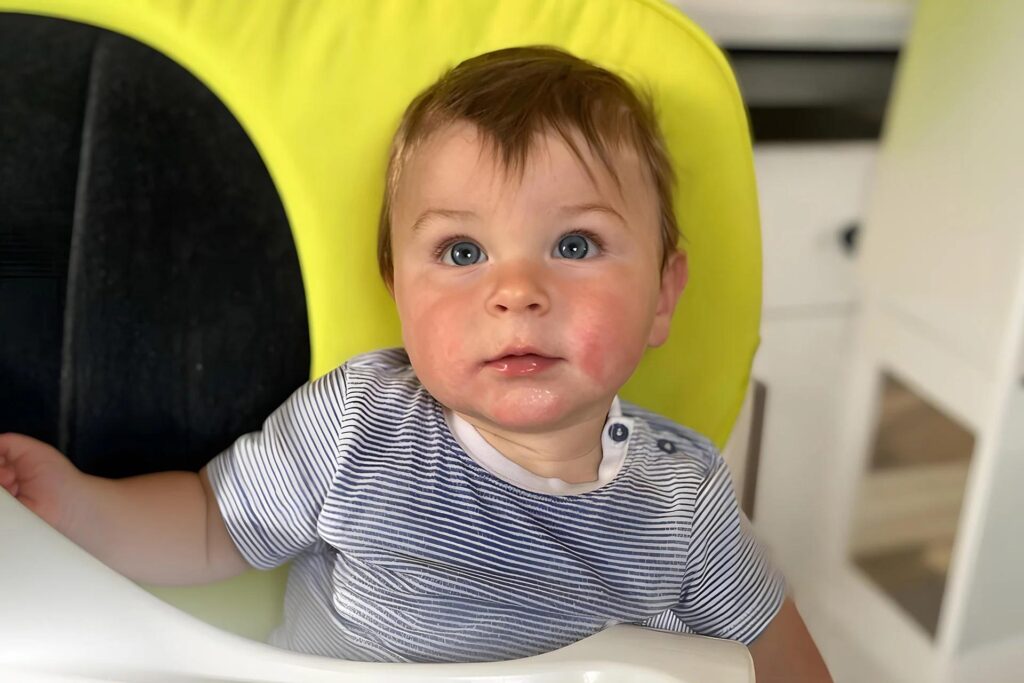Parenthood brings countless joys, but it also introduces challenges that can make even the most prepared caregiver feel uncertain. One common concern that many new parents face during warmer months is understanding why their baby develops small, red bumps on their skin. These uncomfortable eruptions can cause distress for both baby and parent, yet the condition is entirely manageable with proper knowledge and care strategies.
When temperatures rise and humidity levels increase, your infant’s delicate skin becomes particularly vulnerable to developing uncomfortable reactions. The condition occurs when sweat becomes trapped in developing sweat ducts, creating irritation and inflammation. Understanding this phenomenon helps you respond proactively rather than reactively when your little one shows signs of discomfort.
Understanding the Root Causes
The primary culprit behind this skin condition is perspiration accumulation beneath the skin’s surface. Babies have immature thermoregulation systems, meaning their bodies struggle to cool themselves efficiently compared to older children and adults. When environmental conditions become warm or when infants are overdressed, their bodies produce sweat that cannot escape properly through their underdeveloped sweat glands.
Several factors contribute to increased susceptibility in newborns and young infants. Excessive clothing layers, even during mild weather, can trap moisture against the skin. Synthetic fabrics that don’t breathe well prevent adequate air circulation, while high-humidity environments create conditions where perspiration lingers on the skin surface. Additionally, using heavy blankets or swaddling your baby too tightly can accelerate the condition.
Recognizing the Symptoms
Identifying the issue early allows you to implement comfort measures quickly. The characteristic presentation includes tiny red bumps, often accompanied by a prickly sensation that makes babies fussy and uncomfortable. These eruptions typically appear in areas where moisture accumulates most readily, such as skin folds, neck creases, the diaper area, and chest regions.
Your baby might seem more irritable than usual, scratch frequently at affected areas, or demonstrate general discomfort. Some infants experience mild fever accompanying the rash, though this isn’t always present. The appearance can range from subtle pink coloring to more pronounced red clusters, depending on severity and your child’s skin sensitivity.
Environmental Factors That Trigger Flare-ups
Temperature and humidity work together to create ideal conditions for this uncomfortable condition. Summer months present obvious challenges, but indoor heating during winter can be equally problematic if humidity levels drop too low or room temperatures become excessive. Parents sometimes overcompensate during cooler seasons by bundling their babies in multiple layers, inadvertently creating warm microclimates against tiny skin.
Traveling to tropical destinations or moving from air-conditioned environments to hot, humid outdoor spaces can trigger sudden eruptions. New parents often don’t realize that air conditioning, while helpful in preventing overheating, can create dramatic temperature fluctuations that stress a baby’s developing temperature regulation systems. Understanding these environmental triggers helps you plan accordingly and make adjustments before problems develop.
Effective Prevention Strategies
Preventing discomfort is always preferable to treating existing irritation. Start by selecting appropriate clothing for the current weather conditions. Light, breathable fabrics like cotton allow air circulation and moisture evaporation. Check weather forecasts and dress your baby in minimal layers that you can easily remove or add as conditions change throughout the day.
Keep your baby’s sleeping and play areas at comfortable temperatures. If your home tends to be warm, using fans to circulate air helps prevent moisture accumulation. Ensure bathrooms and kitchens don’t trap excess humidity by using ventilation fans during and after water-related activities. Bathe your baby in lukewarm water rather than hot water, as high temperatures stimulate increased sweating.
Regular diaper changes are crucial since dampness in the diaper area accelerates rash development. Change wet or soiled diapers promptly and allow brief periods of diaper-free time when practical to let skin breathe. During these periods, place your baby on a moisture-absorbing cloth rather than plastic surfaces.
Learn More About Baby Heat Rash
For comprehensive information on identifying and managing this common infant skin concern, resources on baby heat rash provide detailed guidance from pediatric skincare specialists. These resources help parents distinguish between various rash types and determine appropriate response strategies based on severity and individual circumstances.
Soothing Techniques and Remedies
Once your baby develops heat rash, gentle care becomes your priority. Lukewarm baths with plain water help cleanse the affected area and provide cooling relief. Avoid using scented soaps or products with added ingredients that might further irritate sensitive skin. Pat your baby’s skin gently with a soft cloth rather than rubbing, which can increase irritation.
Loose, lightweight clothing allows air circulation around affected areas. Some parents find that dressing their babies in just a diaper during peak heat helps tremendously. Keeping your home cool and well-ventilated creates an environment where skin can dry thoroughly and irritation can resolve naturally.
Moisturizing with gentle, fragrance-free creams formulated for sensitive baby skin can provide comfort. Look for products specifically designed for delicate infant skin without harsh chemicals or preservatives. Apply these products to clean, dry skin to create a protective barrier that reduces irritation.
When Professional Guidance Becomes Necessary
Most cases resolve within days with proper environmental adjustment and gentle care. However, certain situations warrant professional medical evaluation. If your baby shows signs of infection, such as pus-filled pustules, increased warmth in affected areas, or fever accompanying the rash, contact your pediatrician promptly. These symptoms suggest secondary bacterial infection requiring medical intervention.
If the rash doesn’t improve after several days of preventive measures, spreads rapidly, or causes your baby extreme distress, a professional assessment helps identify whether another condition might be responsible. Some skin concerns mimic heat rash but require different treatment approaches.
Additional Resources for Concerned Parents
Understanding your baby’s skin needs helps you respond confidently to common concerns. Comprehensive guides about baby heat rash explain how environmental factors, clothing choices, and moisture management directly impact infant skin health. Armed with knowledge, parents can make informed decisions that prioritize their baby’s comfort and wellbeing.
Moving Forward with Confidence
Managing your baby’s skin health during warm weather doesn’t require complicated strategies or expensive treatments. Focusing on prevention through appropriate clothing, temperature management, and moisture control eliminates most concerns before they develop. When occasional eruptions do occur, gentle care and environmental adjustments typically resolve issues quickly.
Remember that most babies experience some skin challenges during their first years. This common condition is temporary and entirely manageable with proper attention and care. By understanding triggers and implementing straightforward solutions, you protect your baby’s comfort while developing confidence in your ability to handle various parenting challenges that arise.
Your pediatrician remains your best resource for personalized advice specific to your baby’s unique needs and circumstances. Don’t hesitate to reach out when concerns arise, as medical professionals welcome opportunities to provide guidance that helps new parents feel more assured in their caregiving abilities. With knowledge, vigilance, and appropriate preventive measures, your baby can enjoy comfort throughout every season.

